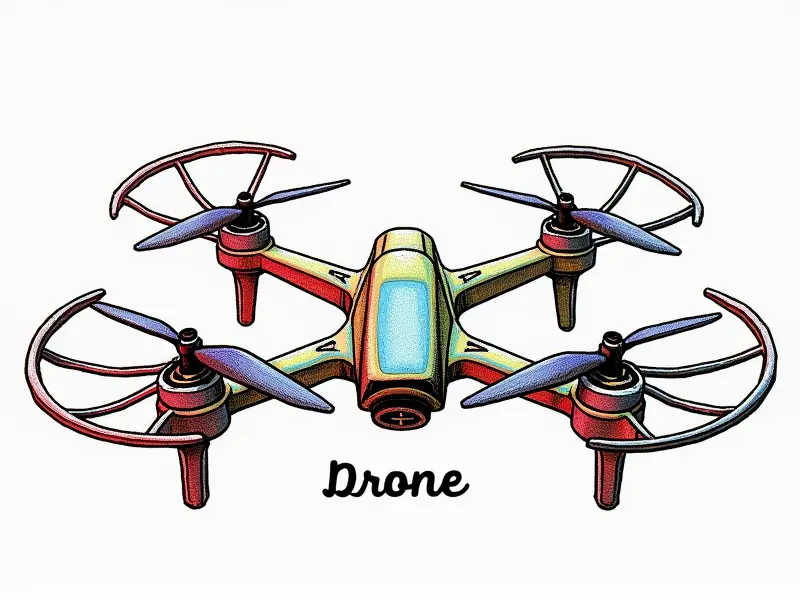What is a gimbal for drones?

Why Every Drone Needs a Gimbal
Drones have revolutionized the way we capture aerial footage, offering unparalleled flexibility and reach. However, raw drone footage often lacks stability and clarity due to vibrations and camera shake. This is where gimbals come in. A gimbal is an essential accessory that ensures your drone's camera remains stable and focused, even during high-speed flights or erratic movements.
How Drone Gimbals Work Magic
A gimbal stabilizes the camera by counteracting the movement of the drone itself. It consists of a series of rings or axes that allow for independent rotation in three dimensions (pitch, roll, and yaw). As the drone moves, the gimbal adjusts to maintain a steady orientation, ensuring smooth video footage and clear still shots.
Benefits of Using Drone Gimbals
- Stability: Gimbals eliminate camera shake and vibrations, providing stable footage even in turbulent conditions.
- Smooth Movements: They allow for smooth panning and tilting movements without the need to physically adjust the drone's orientation.
- Better Aerial Photography: With a gimbal, you can capture high-quality still images with sharp focus and clarity.
Top Tips for Choosing Drone Gimbals
- Compatibility: Ensure the gimbal is compatible with your specific drone model.
- Battery Life: Look for gimbals that have long battery life to avoid interruptions during flights.
- Weight and Size: Opt for a lightweight gimbal that doesn't add unnecessary bulk or affect the drone's performance.
Mastering Drone Photography with Gimbals
To get the most out of your drone's camera, it’s crucial to understand how gimbals enhance image quality. By maintaining stability and reducing blur, gimbals enable you to focus on composition and creativity rather than technical challenges.
Essential Guide to Drone Gimbals
This guide covers everything from the basics of gimbal technology to advanced features like electronic image stabilization (EIS) and mechanical stabilization. Understanding these components will help you make an informed decision when selecting a gimbal for your drone.
Gimbal Types
- Two-Axis Gimbals: Suitable for basic stability needs, offering pitch and roll adjustments.
- Three-Axis Gimbals: Ideal for professional use, providing full control over all three axes (pitch, roll, yaw).
Best Practices for Drone Gimbals
- Maintain Regular Checks: Inspect your gimbal regularly to ensure it's functioning correctly.
- Battery Management: Keep spare batteries handy and monitor the battery level during flights.
- Calibration: Calibrate the gimbal before each flight for optimal performance.
Understanding Drone Gimbal Basics
A basic understanding of how gimbals work is essential. Gimbals use motors and sensors to detect movement in real-time, adjusting the camera’s position accordingly. This ensures that your footage remains stable regardless of the drone's orientation.
Gimbal Components
- Motors: Power the gimbal's movements across different axes.
- Sensors: Detect and measure movement to adjust the camera’s position.
- Battery: Provides power for the motors and sensors.
How Gimbals Improve Drone Stability
Gimbals significantly enhance drone stability by isolating the camera from external forces. This results in smoother footage, reduced blurring, and improved overall image quality. Whether you're filming a fast-paced race or capturing serene landscapes, a gimbal ensures your shots are professional-grade.
Unveiling the Secrets of Drone Gimbals
To truly master drone photography with gimbals, it's important to understand their inner workings and advanced features. By leveraging these insights, you can achieve stunning aerial footage that stands out from the crowd.
Tips for Advanced Users
- Experiment with Settings: Adjust gimbal settings to fine-tune performance based on your specific needs.
- Leverage EIS and OIS: Combine electronic image stabilization (EIS) and optical image stabilization (OIS) for the best results.
Best Gimbals for FPV Racing Drones
For FPV racing drones, stability is crucial to maintain clear vision during high-speed maneuvers. Here are some of the top gimbals designed specifically for this purpose:
- DJI Ronin-S: Known for its robust stabilization and ease of use.
- Hohem IS3000: Offers excellent performance with a compact design suitable for racing drones.
Conclusion
In conclusion, gimbals are indispensable tools for any drone enthusiast looking to elevate their aerial photography and videography. By providing unparalleled stability and smoothness, they enable you to capture stunning visuals that would otherwise be impossible with a standard camera setup. Whether you're a beginner or an advanced user, investing in a high-quality gimbal can transform your drone experience.

